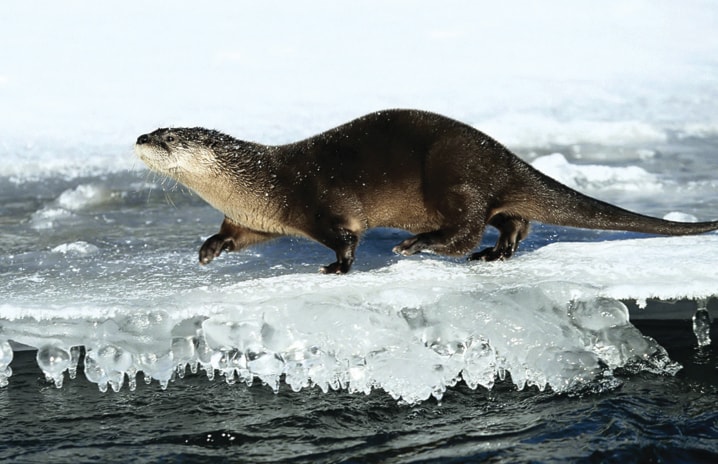They’re cute, they’re social, and they are making their fish-hungry presence felt in the West Country.
River otters will be studied by Alberta Fish and Wildlife researchers who want to know whether their population is exploding and putting pressure on the sports fishery in the Rocky Mountain House area.
More and more anglers are complaining about seeing otters hanging around their favourite streams and fishing holes, including the Clearwater River, Prairie Creek and the Red Deer River, said Carrie Nugent, a wildlife biologist for the Rocky Fish and Wildlife office.
It was rare for her office to hear of an otter sighting until 10 or 15 years ago — although area biologists were always aware that some river otters were living in the area.
The sleek animals are occasionally spotted floating on their backs down streams, or in the winter, coasting down frozen river banks on their bellies.
“They are cute, charismatic animals, but you’ve got to remember they are weasels still — they’re vicious little critters,” added Nugent.
Otters live in family groups, usually including a couple of young. They make their homes in abandoned beaver dens or riverbank burrows evacuated by other animals.
The biologist notes that river otters also eat a lot of fish.
About 92 per cent of their diet consists of fish, with the remainder is made up of crustaceans and other water-bourne lifeforms.
While no local study has ever been done on the river otter population, Nugent said trappers’ records have yielded a limited amount of information. The main problem is this data is dependent on how gung-ho the trappers were (the more traps that were set out, the more otters were trapped).
Nugent hopes her study, which should begin in February and take two years, will provide more reliable information about river otter populations in the area from Drayton Valley to Sundre.
The goal will be to get a handle on otter numbers by tracking their marks in the snow, including their belly slides, which resemble “a fat unicycle tire tread.”
She will also be collecting DNA from their scat and the jelly-like oil secretions that male otters make to mark their territories.
Once the regional otter population is determined, scientists must then consider whether it’s sustainable, considering the fish counts, and the demands of the sports fishery.
She admitted it’s always troublesome to be seen as choosing one animal — fish — over another — otters. But Nugent believes “we need to know what is the appropriate density (of the otter population), given the habitat they have?”
While five lakes near Rocky are stocked with fish and aerated over the winter for the benefit of anglers, Nugent doesn’t think these are making a big difference to the otter population, since many of the animals were seen on natural lakes and streams in the region.
If the area is found to have too many otters, she stressed it won’t mean “open season” on the critters.
Some otter quotas might be opened for the first time for trappers operating south of Rocky, said Nugent. She noted that trappers working north of Rocky are already allowed to trap some otters. Many others turn up accidentally in beaver traps.
Anyone who spots a river otter in the Rocky/Clearwater area can report it to the biologist by emailing carrie.nugent@gov.ab.ca or by phoning 403-845-8303.
lmichelin@www.reddeeradvocate.com
